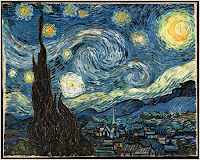JB: Hi Lynne. Glad you're able to be here today. Your book, The Comrades, is set in Wales in the Ninth Century. I understand you did a lot of research into Welsh law in that period, especially law relating to women Can you give us a quick overview of what was gong on in European law?
LSW: Many countries in the 9th Century had codified law to some extent. The Anglo-Saxons in England had a lock on the feudal system, and decided the inheritance of a deceased man went to the eldest son. No money or property passed into the hands of a daughter; illegitimate children were ignored.
 Wales took a different view, which focused on people in terms of status. Essentially, it was a caste system with a Celtic flare.
Wales took a different view, which focused on people in terms of status. Essentially, it was a caste system with a Celtic flare.JB: Give me some examples of how Welsh law dealt with the status of women. Marriage law, for instance.
LSW: Marriages were usually made for dynastic reasons, to form alliances and women never married a person of higher status. When codified in the 10th Century, "The Laws of Women" took up considerable space in the book.
The daughter of a king was worth 24 pieces of gold and brought a dowry that might include livestock, pots, pans, or jewelry.

JB: What about divorce?
LSW: Divorce was permitted, though the Church, fostered by Irish priests, deplored it.
One factor could initiate the process. If a groom discovered on the wedding night that his wife was not a maiden, he could leave, with a certain weapon fully erect. Once he located witnesses to show his 'disappointment' they all had to go check the bridal sheets. No blood, no bride, no marriage. Divorce was instantaneous.
There were many categories for divorce; if one person changed his or her mind the next day, if a partner turned out to be infertile or wait seven years and divide everything.
A song in our century once asked, "What's love got to do with it?" The answer in Wales: "Nothing!"
JB: Can you give us something of the flavor of the law in Wales in the Ninth Century? What are some specifics that would feel odd to us today?
LSW: Law prescribed everything possible. The seating arrangement in the Great Hall included specific people who would sit with the King, including the priest. He would sing the Pater Noster before meals. The falconer and the bard had places of honor.
The law stated that if the queen desired to hear more music, the bard would play quietly, just for her.
'Claim-time' occurred once a year when people who'd been arguing needed to settle the affair or have the king step in. The only capital offence was theft; in a land where controlled order was needed, to steal was anathema.
JB: So you could say law dealt mainly with property.
LSW: Every man, woman and child had a specific 'price' that would be considered by the King if a person was harmed. 'Honor price' entered the stage and could never be ignored.
 Land law, surety, how to treat a person not born in Wales were logistically calculated as were dogs, tamed or wild. Then to the truly different: all of the king's possessions had a specific price, including his cat, who was worth a sheep and a lamb if killed or stolen.
Land law, surety, how to treat a person not born in Wales were logistically calculated as were dogs, tamed or wild. Then to the truly different: all of the king's possessions had a specific price, including his cat, who was worth a sheep and a lamb if killed or stolen.Curiouser and curiouser, Alice might say.
Not in 9th Century Wales, my dear. Go on and chase your rabbit; we are busy looking for the King's Cat. It's missing.
Again.
JB: Heh heh. Tell me a little bit about your book.
 LSW: In The Comrades, Evan, king of Powys, returns from a wedding to find a village ransacked, with women and children dead. Neighboring Gwynedd has broken the peace, crossing the mountain to pillage and murder. The dead babes tear his heart, and Evan vows to break the heart of Gwynedd.
LSW: In The Comrades, Evan, king of Powys, returns from a wedding to find a village ransacked, with women and children dead. Neighboring Gwynedd has broken the peace, crossing the mountain to pillage and murder. The dead babes tear his heart, and Evan vows to break the heart of Gwynedd.Gwynedd's most guarded treasure is a pampered princess. In a bloody raid, Evan's comrades return to Powys with Gwynedd's heart.
Evan knows holding the princess will be dangerous and her safe-keeping may mean the difference between the lasting peace he desires and a bloody war. He's prepared for her to be kept safe but unprepared for the girl's intelligence, compassion and damnably kissable mouth.
"Evan took in the vision of a scarlet gown, which barely disguised the shapely form and a river of black curls that caressed to girl's waist. Oh, Lord. He wished he had ordered sackcloth."
Morleyna's secret gift of Sight reveals a cruel betrayal that sends Evan on a mystical journey where he discovers his only chance for redemption rests in the hands of his captive.
Her brothers will arrive to claim their sapphire-eyed sister. Will her kinsmen, bent on revenge, destroy Evan and his comrades? Or will destruction come from Morleyna who may be the reincarnation of someone whose beauty captivated a nation?
JB: Lynne's book is available from Amazon and as an e-book kindle, Nook, and iTunes. And here's the lovely book trailer.


















































